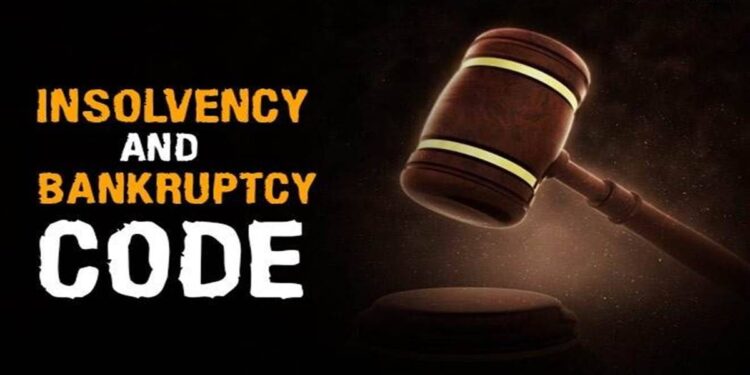Recovery for financial creditors from the resolution of stressed firms under the Insolvency and Bankruptcy Code (IBC) crashed to a record quarterly low of 10.2% of their admitted claims in the three months through March, in yet another reminder for an urgent need for interventions to prevent the erosion of toxic asset value.
In fact, at Rs 1,288 crore, the realisation for financial creditors in the March quarter dropped below the assets’ liquidation value (Rs 1,316 crore) for the first time. This is for a second straight quarter when recovery by financial creditors remained well below par — it was just 13.4% in the December quarter.
Consequently, cumulative recovery for lenders where resolution took place dropped to just 32.9% till March 2022 from 35.9% up to September 2021, according to the data compiled by the Insolvency and Bankruptcy Board of India (IBBI).
In absolute term, the cumulative recovery for financial creditors till the March quarter stood at Rs 2.25 trillion.
Analysts blame the reduced market appetite for toxic assets in the wake of the pandemic — on top of inordinate delay in resolution, caused by protracted legal tussles and bottlenecks in the adjudicating system — for the poor recovery. While they conceded that the IBC shouldn’t be judged by its performance in just one or two quarters and that the universe of bidders seems to have shrunk in the aftermath of the Covid-19 outbreak, they were unanimous in blaming the clogged NCLT (National Company Law Tribunal) system for the delay in resolution. It not just leads to asset value erosion but discourages serious suitors from bidding for the insolvent firms for fear of losing out if the process stretches on.
As many as 66% of companies that are undergoing resolution have exceeded the 270-day limit, showed the IBBI data. The IBC sets a time frame of 180 days to resolve stress in a firm, which can be extended by another 90 days with the NCLT approval.
This brings to the fore lenders’ growing unease over invoking the IBC for the resolution of stressed assets and adds to the urgency of addressing systemic issues, the experts have said.
Of course, an overwhelming number of “dead cases” pertaining to the earlier BIFR regime have also contributed to the elevated haircuts so far. Out of 480 stressed firms that were rescued through resolution till March and for which the data are available, as many as 149 were either transferred from the earlier BIFR regime or defunct, according to the IBBI. Also, when a case is referred to the IBC is crucial. However, the sharp drop in recovery in recent quarters “can’t still be justified”, analysts feel.
Anoop Rawat, partner (insolvency & bankruptcy) at Shardul Amarchand Mangaldas, said: “NCLTs are delaying the matter, as there is a huge backlog of cases. One reason for it is that during the pandemic, they were not working to the full capacity. Though they are functioning now, given the shortage of members, the backlog isn’t cleared yet. This is ultimately affecting the recovery.” Plus, there is lack of appetite for insolvent MSMEs or low-value firms.
Moreover, unlike in earlier cases, upfront cash payment for stressed assets is increasingly getting substituted by staggered payment mechanism, as part of the resolution plans. “These plans involve little upfront cash payment and subsequent pay-outs can be linked to the company’s performances. This also weighs on the ultimate recovery,” Rawat said.
Jyoti Prakash Gadia, managing director at consultany firm Resurgent India, said: “The initial euphoria has been lost due to the lesser appetite of new investors on account of overall uncertainties caused by the negative impact of pandemic on the economy.”
The sector-specific issues relating to the viability and overall potential of future earnings in worst-affected sectors like real estate, hospitality, etc are also to be blamed for low realisations, Gadia said. Strict adherence to the resolution timelines at each stage needs to be ensured, Gadia added.
Shravan Shetty, managing director at consultancy firm Primus Partners, said: “The government should increase legal capacity to deal with cases while strengthening the IBC process by reducing options to go to the court against the process. Also, given the uncertainty following the pandemic, there will be a need on the part of the creditors to look at a lower recovery.”
For its part, the IBBI has been seeking to cut delays. In a recent discussion paper, it has proposed to impose an obligation on the committee of creditors to share all documents on the stressed firm with the insolvency resolution professional and prescribed time limit for the preparation of information memorandum and the completion of valuation exercise. However, unless the NCLT system is fixed, these are unlikely to be of much help, the analysts said.
Last year, seeking an urgent filling up of posts at various benches of NCLT, the Parliamentary Standing Committee on Finance had highlighted that the tribunal was short of 34 members (judges) from the sanctioned strength (63). The situation hasn’t changed much, the analysts added.














